Table of Contents
- Historical Analysis: What Happened After the 2020 US Presidential Election?
- Current Trends on Web2 Prediction Markets
- Post-Election Assumptions for Web3 Prediction Markets and Potential Next Big Events for Prediction Markets
- Conclusion: Future Prospects for Web3 Prediction Markets
Table of Contents
- Historical Analysis: What Happened After the 2020 US Presidential Election?
- Current Trends on Web2 Prediction Markets
- Post-Election Assumptions for Web3 Prediction Markets and Potential Next Big Events for Prediction Markets
- Conclusion: Future Prospects for Web3 Prediction Markets
Future of Prediction Markets After Elections
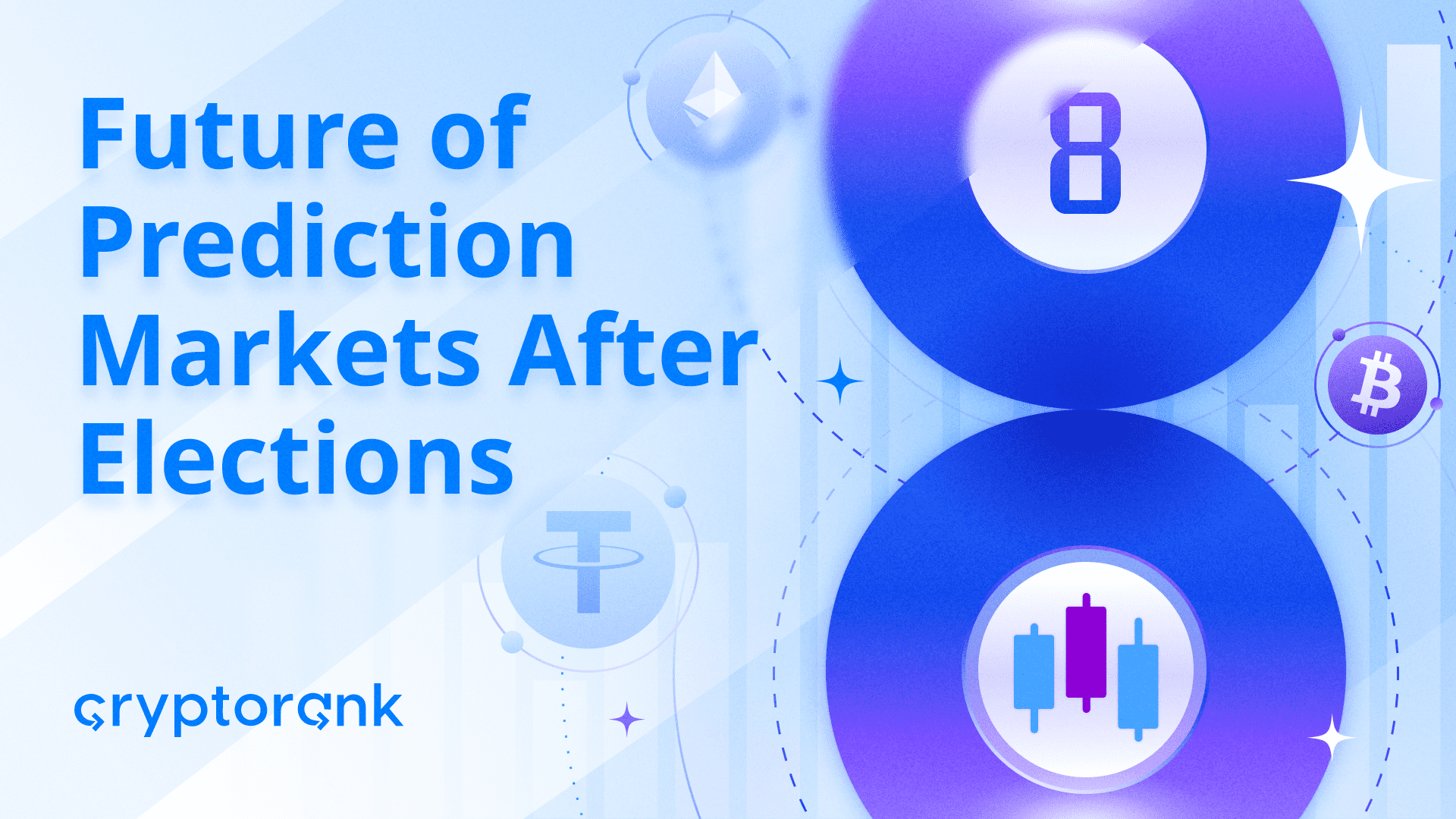

Historical Analysis: What Happened After the 2020 US Presidential Election?
After launching in June 2020, Polymarket's trading volume began to rise, peaking during the U.S. Presidential Election in November 2020, with approximately $26 million traded that month. This surge can be attributed to heightened interest in political outcomes, as traders speculated on the election results. Following the election, volumes dipped significantly, reflecting a common trend in prediction markets where interest wanes post-major events. For instance, January 2021 saw a volume of $32 million, but by April 2021, it had dropped to $6.2 million.
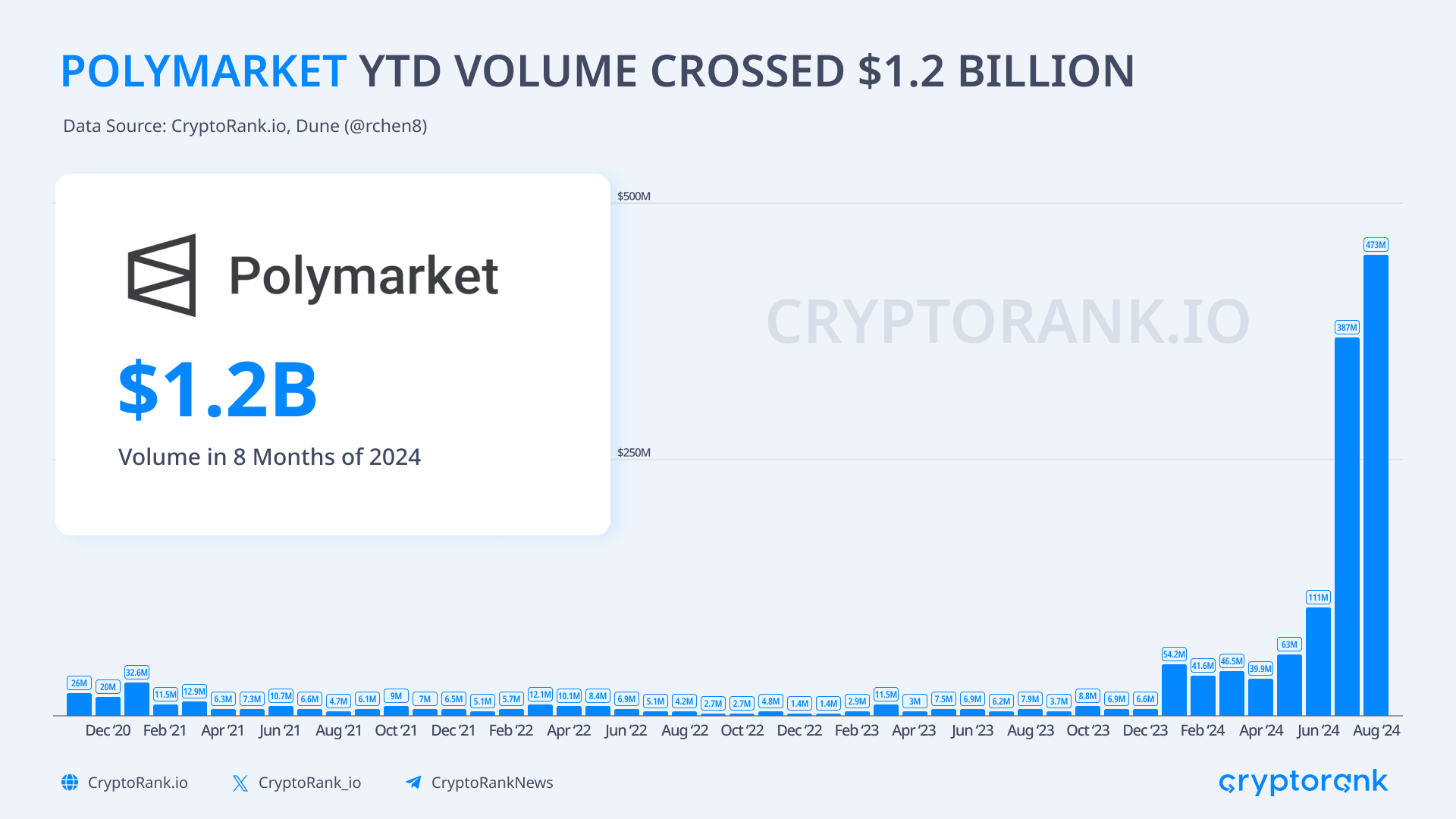
The lead-up to the 2024 elections has reignited interest in Polymarket, with trading volumes reaching new heights. In August 2024, trading volume soared to $473 million, a dramatic increase from the previous months. This indicates a robust engagement from users, driven by the competitive nature of the upcoming elections and the platform's ability to facilitate real-time betting on political outcomes.
The current political landscape, including candidates like Donald Trump and Kamala Harris, has created a fertile ground for speculation, with over $500 million in bets placed on the presidential election alone.
Current Trends on Web2 Prediction Markets
Web2 prediction markets, such as PredictIt and Betfair, provide valuable insights into how the public engages with political events. Currently, these platforms are seeing high activity levels due to the US Presidential Election.
- Trending Topics: Beyond elections, trending topics on Web2 platforms include economic indicators like inflation rates, central bank policy decisions, and global geopolitical events. Events like the Brexit referendum have previously spiked activity, and similar geopolitical issues continue to draw attention.
- Demographic Insights: Web2 platforms attract a diverse user base, but there's a notable skew towards politically engaged demographics. This is similar in Web3 platforms, though with an added attraction for the technologically savvy and crypto-enthusiastic crowd.
- Technological Integration: Web2 platforms are integrating more sophisticated models, using AI to predict outcomes and provide real-time odds adjustments based on news events, which is something Web3 platforms can learn from.
|
Platform |
Top Trending Categories (2024) |
Top Trending Categories (2020) |
|
PredictIt |
US Elections, Inflation, War in Ukraine |
US Elections, Brexit, Federal Reserve Rates |
|
Betfair |
US Elections, Climate Change, AI Policies |
US Elections, Brexit, US-China Trade War |
|
Polymarket |
US Elections, Crypto Prices, AI Policies |
US Elections, COVID-19, Bitcoin Halving |
|
Augur |
US Elections, Sports Events, Tech Earnings |
US Elections, COVID-19, Stock Market Crash |
The chart below shows the predicted engagement in different topics over the next 12 months, highlighting a decline in political interest and a rise in other areas such as geopolitical events and economic indicators.
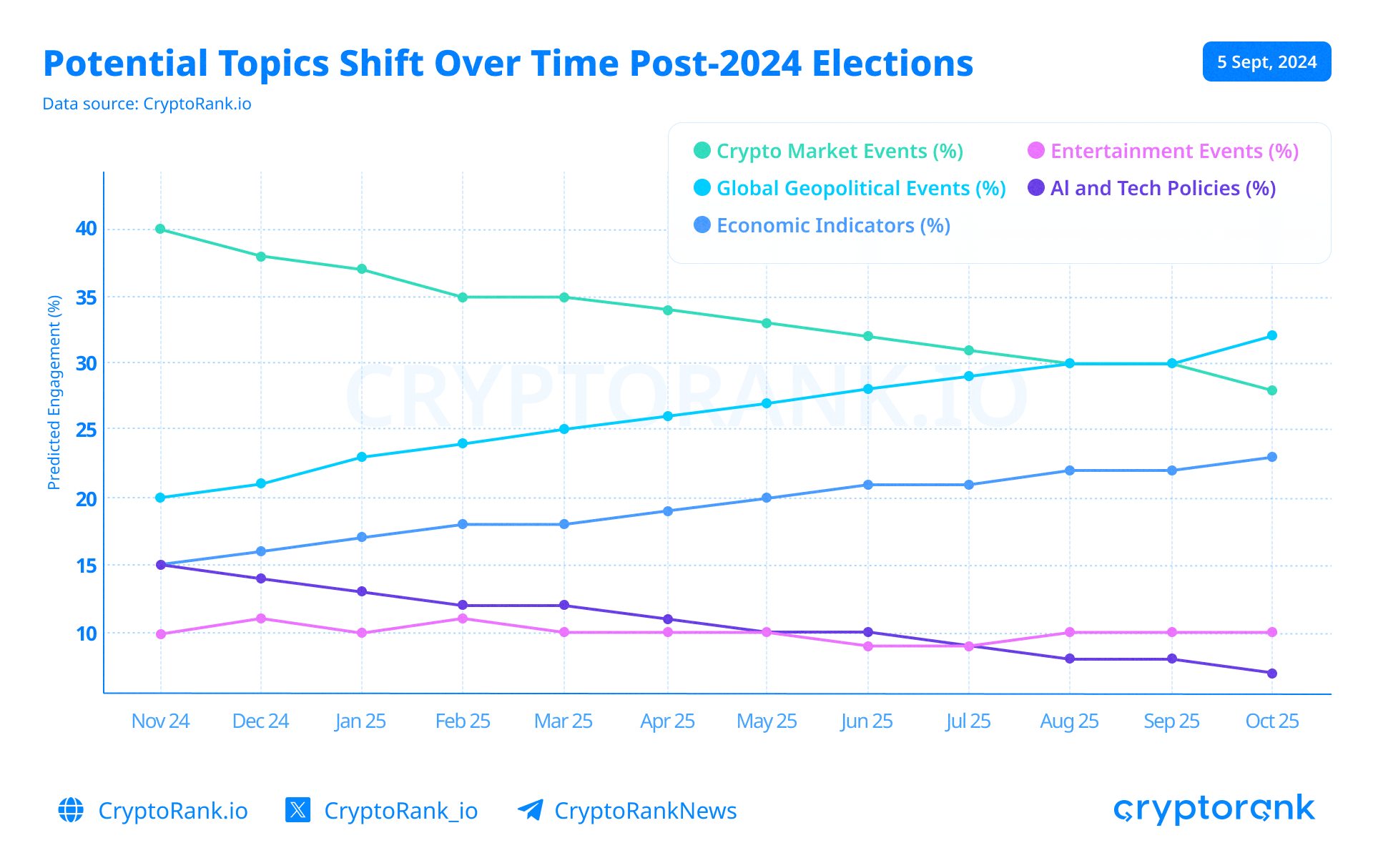
Another chart below compares user engagement trends across Web2 and Web3 platforms, showcasing the distribution of interests among different categories like politics, crypto, and sports.
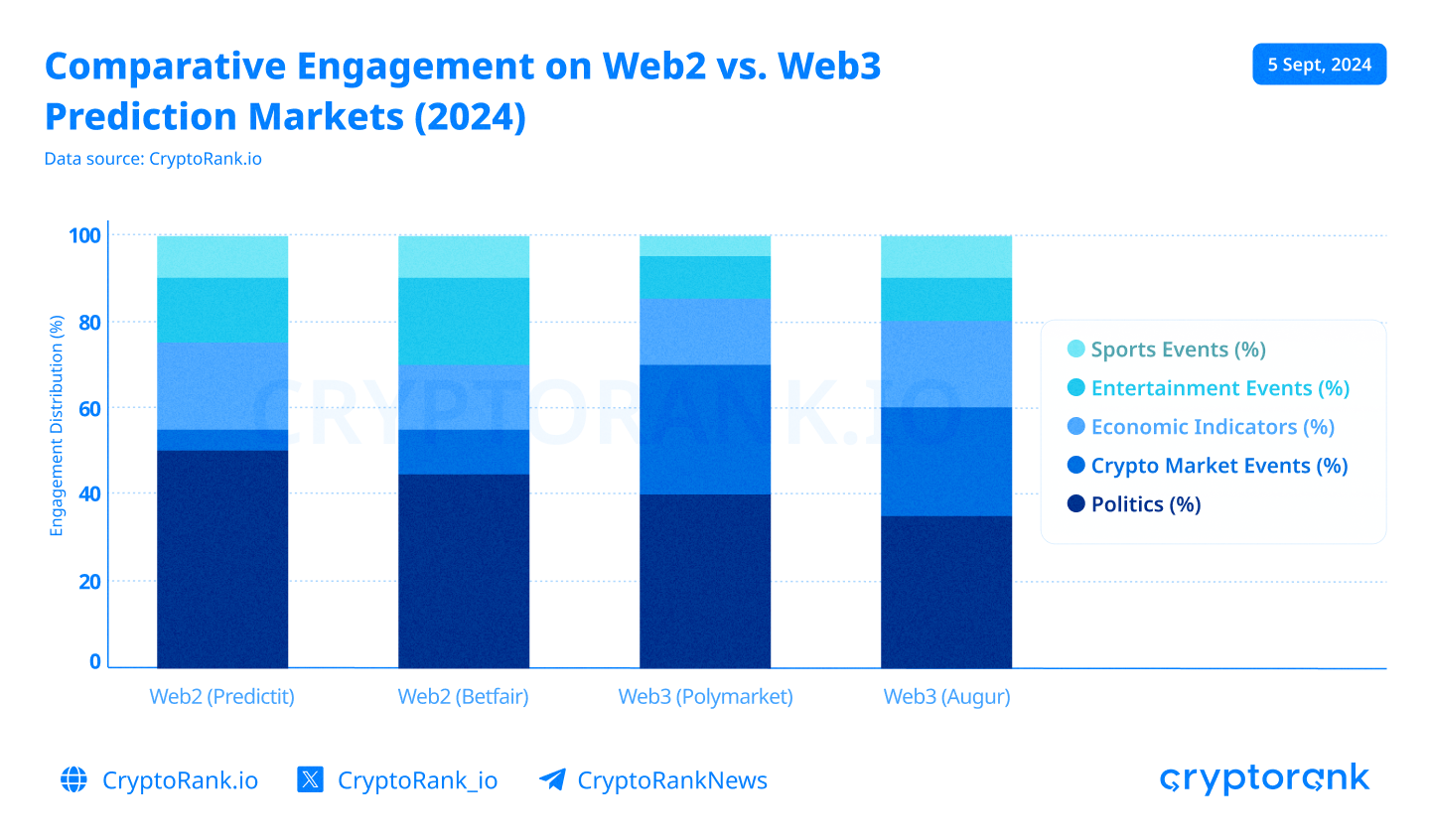
Post-Election Assumptions for Web3 Prediction Markets and Potential Next Big Events for Prediction Markets
To maintain momentum and attract users beyond election cycles, prediction markets will need to expand their offerings and focus on a wider range of events and topics. Web2 prediction markets like PredictIt have already begun to diversify, with current trending topics including the 2024 Olympics, the next Federal Reserve interest rate decision, and the winner of the 2023 Nobel Prize in Economics.
Web3 prediction markets like Polymarket could follow a similar path, leveraging their decentralized nature to offer markets on a diverse array of topics, from sports and entertainment to science and technology. For example, Polymarket could introduce markets on the release date of highly anticipated movies or video games, the winner of major sporting events, or the success of upcoming IPOs and crypto projects.
By offering a wide range of markets, prediction platforms can attract a more diverse user base and reduce their reliance on political events. This diversification could also help to increase the overall size and liquidity of the prediction market ecosystem, making it more attractive to potential users and investors.
Based on the historical trends illustrated above and current activities in Web2 markets, several assumptions can be made about the future of prediction markets like Polymarket after the 2024 elections:
- Shift to Non-Political Markets: As seen after the 2020 elections, it's plausible that users will pivot to non-political markets. Given the volatile nature of cryptocurrencies and ongoing developments in blockchain technology, these areas could become significant focal points.
- Emerging Topics: New technologies, particularly in AI regulations, climate policies, and tech company performance, are likely to gain traction. These topics are already trending on Web2 platforms and could similarly engage Web3 users.
- Real-Time Data Integration: To sustain engagement levels, prediction markets might increasingly integrate real-time data feeds, AI-driven insights, and blockchain analytics to offer up-to-the-minute information influencing market movements.
Conclusion: Future Prospects for Web3 Prediction Markets
Prediction markets, particularly those operating in the Web3 space, face a dynamic future. After the 2024 elections, we can expect a shift from predominantly political markets to a broader spectrum of topics. Learning from Web2 platforms and adopting innovative technologies will be key for Web3 prediction markets like Polymarket to maintain user engagement and foster growth. To stay relevant and competitive, these platforms must diversify their event offerings, enhance predictive analytics, and align closely with emerging global trends. The future success of prediction markets will depend on their ability to adapt quickly to changing user interests and global circumstances.
Disclaimer: This post was independently created by the author(s) for general informational purposes and does not necessarily reflect the views of ChainRank Analytics OÜ. The author(s) may hold cryptocurrencies mentioned in this report. This post is not investment advice. Conduct your own research and consult an independent financial, tax, or legal advisor before making any investment decisions. The information here does not constitute an offer or solicitation to buy or sell any financial instrument or participate in any trading strategy. Past performance is no guarantee of future results. Without the prior written consent of CryptoRank, no part of this report may be copied, photocopied, reproduced or redistributed in any form or by any means.
In This Insight
Coins
Read More
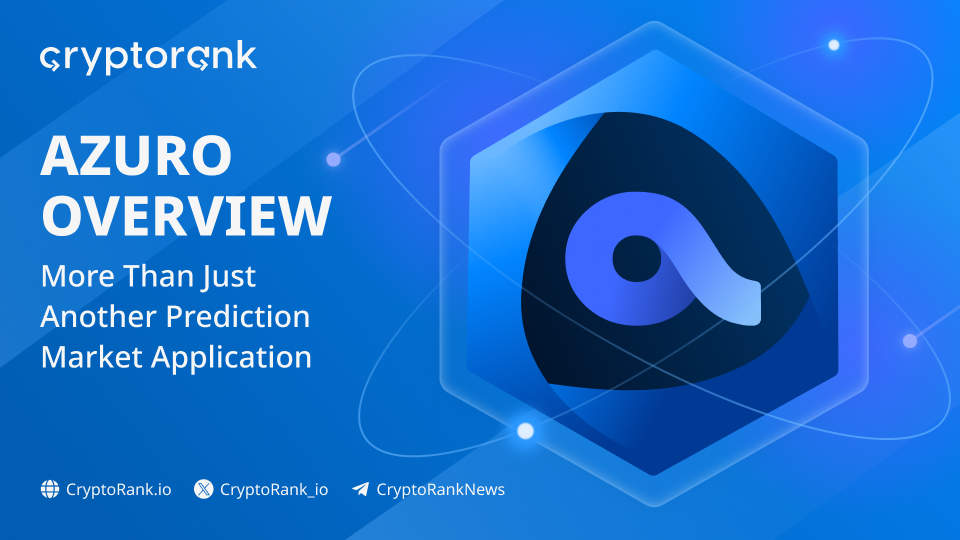
Azuro: More Than Just Another Prediction Market Application
Table of Contents
- Historical Analysis: What Happened After the 2020 US Presidential Election?
- Current Trends on Web2 Prediction Markets
- Post-Election Assumptions for Web3 Prediction Markets and Potential Next Big Events for Prediction Markets
- Conclusion: Future Prospects for Web3 Prediction Markets
Table of Contents
- Historical Analysis: What Happened After the 2020 US Presidential Election?
- Current Trends on Web2 Prediction Markets
- Post-Election Assumptions for Web3 Prediction Markets and Potential Next Big Events for Prediction Markets
- Conclusion: Future Prospects for Web3 Prediction Markets